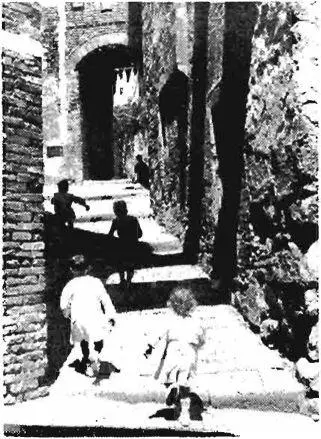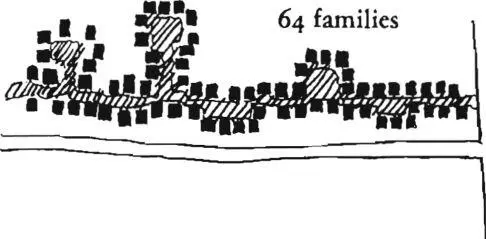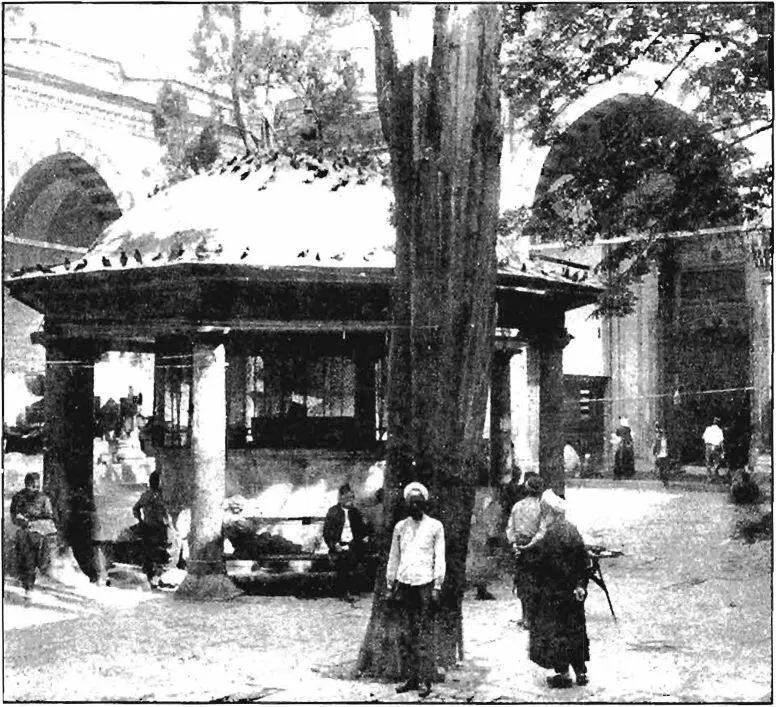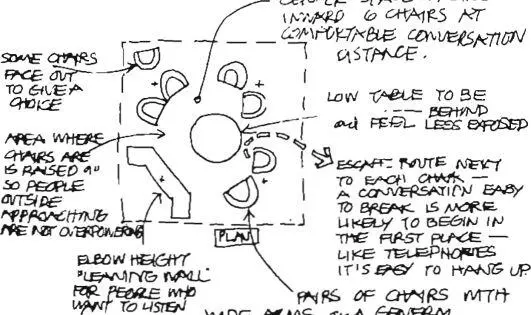Christopher alexander - A pattern language
Здесь есть возможность читать онлайн «Christopher alexander - A pattern language» весь текст электронной книги совершенно бесплатно (целиком полную версию без сокращений). В некоторых случаях можно слушать аудио, скачать через торрент в формате fb2 и присутствует краткое содержание. Жанр: Прочая научная литература, на английском языке. Описание произведения, (предисловие) а так же отзывы посетителей доступны на портале библиотеки ЛибКат.
- Название:A pattern language
- Автор:
- Жанр:
- Год:неизвестен
- ISBN:нет данных
- Рейтинг книги:3 / 5. Голосов: 1
-
Избранное:Добавить в избранное
- Отзывы:
-
Ваша оценка:
- 60
- 1
- 2
- 3
- 4
- 5
A pattern language: краткое содержание, описание и аннотация
Предлагаем к чтению аннотацию, описание, краткое содержание или предисловие (зависит от того, что написал сам автор книги «A pattern language»). Если вы не нашли необходимую информацию о книге — напишите в комментариях, мы постараемся отыскать её.
A pattern language — читать онлайн бесплатно полную книгу (весь текст) целиком
Ниже представлен текст книги, разбитый по страницам. Система сохранения места последней прочитанной страницы, позволяет с удобством читать онлайн бесплатно книгу «A pattern language», без необходимости каждый раз заново искать на чём Вы остановились. Поставьте закладку, и сможете в любой момент перейти на страницу, на которой закончили чтение.
Интервал:
Закладка:
The problem may be stated as follows: In an infinite population of children, one-sixth are the right age and five-sixths are the wrong age for any given child. A group of r children is
345
CHOOSING A LANGUAGE FOR YOUR SUBJECT
you have the power to help create these patterns, at least In a small way, in the world around your project. The ones at the end are “smaller.” Almost all of them will be important. Tick all of them, on your list, unless you have some special reason for not wanting to include them.
4. Now your list has some more ticks on it. Turn to the next highest pattern on the list which is ticked, and open the book to that pattern. Once again, it will lead you to other patterns. Once again, tick those which are relevant—especially the ones which are “smaller” that come at the end. As a general rule, do not tick the ones which are “larger” unless you can do something about them, concretely, in your own project.
5. When in doubt about a pattern, don’t include it. Your list can easily get too long: and if it does, it will become confusing. The list will be quite long enough, even if you only include the patterns you especially like.
6. Keep going like this, until you have ticked all the patterns you want for your project.
7. Now, adjust the sequence by adding your own material. If there are things you want to include in your project, but you have not been able to find patterns which correspond to them, then write them in, at an appropriate point in the sequence, near other patterns which are of about the same size and importance. For example, there is no pattern for a sauna. If you want to include one, write it in somewhere near bathing room(144) in your sequence.
8. And of course, if you want to change any patterns, change them. There are often cases where you may have a personal version of a pattern, which is more true, or
xxxix
TOWNS
chosen at random. The probability that this group of r children
4
contains 5 or more right-age children in it is 1 — 2 P r>u, where
lc = o
P r kis the hypergeometric distribution. If we now ask what is the
4
least r which makes 1 — 2 P r, k> 0.95, r turns out to be 54.
k = o
If we need 54 children, we need a total population of 4(54) = 216, which at 3.4 persons per household, needs 64 households.
Sixty-four is a rather large number of households to share connected common land. In fact, in the face of this requirement, there is a strong temptation to try to solve the problem by grouping 10 or 12 homes in a cluster. But this will not work: while it is a useful configuration for other reasons—house cluster (37) and common land (67)—by itself it will not solve the problem of connected play space for children. There must also be safe paths to connect the bits of common land.
 |
| Connecting faths . |
Therefore:
Lay out common land, paths, gardens, and bridges so that groups of at least 64 households are connected by a
346
68 CONNECTED PLAY
swath of land that does not cross traffic. Establish this land as the connected play space for the children in these households.
| safe connections | ||
|---|---|---|
| play space |  |
fast traffic outside |
.j. .$.
Do this by connecting several house clusters (37) with green streets (51) and safe paths. Place the local children’s home (86) in this play space. Within the play space, make sure the children have access to mud, and plants, and animals, and water—still water (71), animals (74); set aside one area where there is all kinds of junk that they can use to make things
-ADVENTURE PLAYGROUND (73). . . .
347
| 6g PUBLIC OUTDOOR ROOM** |
|---|
 |
348
. . . the common land in main gateways (53), accessible
GREEN (6o), SMALL PUBLIC SQUARES (6l), COMMON LAND (67), PEDESTRIAN STREET (lOO), PATHS AND GOALS ( I 20) needs at least some place where hanging out and being “out” in public become possible. For this purpose it is necessary to distinguish one part of the common land and to define it with a little more elaboration. Also, if none of the larger patterns exist yet, this pattern can act as a nucleus, and help them to crystallize around it.
❖ *$♦
There are very few spots along the streets of modern towns and neighborhoods where people can hang out, comfortably, for hours at a time.
Men seek corner beer shops, where they spend hours talking and drinking; teenagers, especially boys, choose special corners too, where they hang around, waiting for their friends. Old people like a special spot to go to, where they can expect to find others; small children need sand lots, mud, plants, and water to play with in the open; young mothers who go to watch then-children often use the children’s play as an opportunity to meet and talk with other mothers.
Because of the diverse and casual nature of these activities, they require a space which has a subtle balance of being defined and yet not too defined, so that any activity which is natural to the neighborhood at any given time can develop freely and yet has something to start from.
For example, it would be possible to leave an outdoor room unfinished, with the understanding it can be finished by people who Jive nearby, to fill whatever needs seem most pressing. It may need sand, or water faucets, or play equipment for small children—adventure playground (73); it may have steps and seats, where teenagers can meet—-teenage society (84) ; someone may build a small bar or coffee shop in a house that opens into the area, with an arcade, making the arcade a place to eat and
TOWNS
drink—food stands (93); there may be games like chess and checkers for old people.
Modern housing projects especially suffer from the lack of this kind of space. When indoor community rooms are provided, they are rarely used. People don’t want to plunge into a situation which they don’t know; and the degree of involvement created in such an enclosed space is too intimate to allow a casual passing interest to build up gradually. On the other hand, vacant land is not enclosed enough. It takes years for anything to happen on vacant land; it provides too little shelter, and too little “reason to be there.”
What is needed is a framework which is just enough defined so that people naturally tend to stop there; and so that curiosity naturally takes people there, and invites them to stay. Then, once community groups begin to gravitate toward this framework, there is a good chance that they will themselves, if they are permitted, create an environment which is appropriate to their activities.
We conjecture that a small open space, roofed, with columns, but without walls at least in part, will just about provide the necessary balance of “openness” and “closedness.”
| CJeiCrtf- (0 OHAif-S A?T |
|---|
 |
| vywr MASSim^SS ro in eur^sr |
A beautiful example of the pattern was built by Dave Chapin and George Gordon with architecture students from Case Western Reserve in Cleveland, Ohio, They built a sequence of public out-
Читать дальшеИнтервал:
Закладка:
Похожие книги на «A pattern language»
Представляем Вашему вниманию похожие книги на «A pattern language» списком для выбора. Мы отобрали схожую по названию и смыслу литературу в надежде предоставить читателям больше вариантов отыскать новые, интересные, ещё непрочитанные произведения.
Обсуждение, отзывы о книге «A pattern language» и просто собственные мнения читателей. Оставьте ваши комментарии, напишите, что Вы думаете о произведении, его смысле или главных героях. Укажите что конкретно понравилось, а что нет, и почему Вы так считаете.












